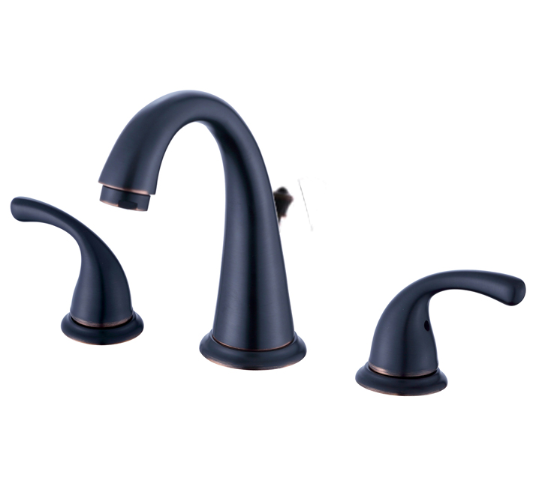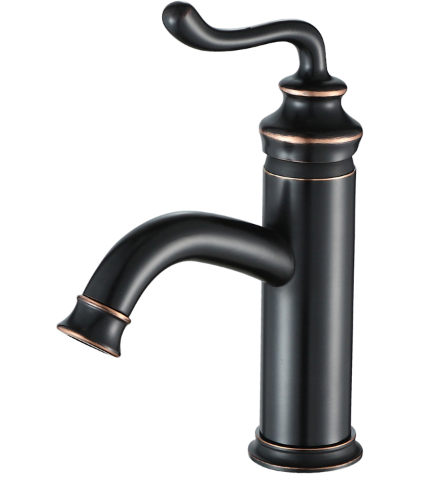How to Clean and Maintain Your Kitchen Faucet for a Long Lasting Life
Your kitchen faucet is one of the most frequently used fixtures in your home. Over time, it can develop mineral buildup, rust, and other issues that can affect its performance and lifespan. Fortunately, with a little bit of cleaning and maintenance, you can keep your kitchen faucet in top shape for many years to come. In this article, we'll provide you with tips and tricks on how to clean and maintain your kitchen faucet.
Importance of maintaining your kitchen faucet
Regular maintenance of your kitchen faucet is essential for its long-term durability and proper functioning. A neglected faucet can develop leaks, rust, and mineral buildup, which can lead to more significant problems and costly repairs in the future. By performing regular cleaning and maintenance, you can avoid these issues and prolong the life of your kitchen faucet.
Benefits of regular cleaning and maintenance
Cleaning and maintaining your kitchen faucet has several benefits, including:
●Improved performance - A well-maintained kitchen faucet will work efficiently, providing you with the water pressure and temperature you need for cooking and cleaning.
●Longer lifespan - Regular cleaning and maintenance can extend the life of your faucet and delay the need for costly repairs or replacements.
●Better hygiene - A clean faucet is less likely to harbor bacteria and other harmful microorganisms, reducing the risk of illness.
●Improved performance - A well-maintained kitchen faucet will work efficiently, providing you with the water pressure and temperature you need for cooking and cleaning.
●Longer lifespan - Regular cleaning and maintenance can extend the life of your faucet and delay the need for costly repairs or replacements.
●Better hygiene - A clean faucet is less likely to harbor bacteria and other harmful microorganisms, reducing the risk of illness.
How to Clean Your Kitchen Faucet
To clean your kitchen faucet, you'll need a few basic supplies:
●Distilled white vinegar
●Baking soda
●Clean cloth or sponge
●Old toothbrush
●Plumber's tape
●Wrench or pliers
Follow these steps to clean your kitchen faucet:
●Distilled white vinegar
●Baking soda
●Clean cloth or sponge
●Old toothbrush
●Plumber's tape
●Wrench or pliers
Follow these steps to clean your kitchen faucet:
Step 1: Removing mineral deposits
Mineral deposits are a common problem with kitchen faucets, especially if you have hard water. These deposits can clog the aerator and affect the water flow. To remove mineral deposits, you'll need:
●A plastic bag.
●Distilled white vinegar
Fill a plastic bag with enough vinegar to submerge the faucet's spout. Wrap the bag around the spout, securing it with a rubber band or string. Leave the bag in place for at least 30 minutes, then remove it and use a toothbrush to scrub away any remaining deposits.
●A plastic bag.
●Distilled white vinegar
Fill a plastic bag with enough vinegar to submerge the faucet's spout. Wrap the bag around the spout, securing it with a rubber band or string. Leave the bag in place for at least 30 minutes, then remove it and use a toothbrush to scrub away any remaining deposits.
Step 2: Cleaning the aerator
The aerator is a small device located at the tip of the faucet spout that controls the water flow. Over time, it can become clogged with debris and mineral deposits, affecting the water pressure and flow. To clean the aerator, follow these steps:
● Unscrew the aerator from the spout using a wrench or pliers.
● Soak the aerator in a bowl of vinegar for at least 30 minutes.
● Scrub the aerator with an old toothbrush, then rinse it thoroughly.
● Reattach the aerator to the spout, using the plumber's tape if necessary.
● Unscrew the aerator from the spout using a wrench or pliers.
● Soak the aerator in a bowl of vinegar for at least 30 minutes.
● Scrub the aerator with an old toothbrush, then rinse it thoroughly.
● Reattach the aerator to the spout, using the plumber's tape if necessary.
Step 3: Cleaning the handle and spout
The handle and spout can also accumulate dirt, grime, and mineral deposits. To clean them, use a cloth or sponge soaked in a solution of water and baking soda. Scrub gently, then rinse with water and dry with a clean cloth.
Step 4: Polishing the faucet
To give your faucet a shiny finish, use a microfiber cloth or a soft cloth to polish it gently. Be sure to avoid using abrasive cleaners or steel wool, which can scratch the faucet's surface.
How to Maintain Your Kitchen Faucet
To maintain your kitchen faucet, follow these tips:
Step 1: Prevent mineral buildup
To prevent mineral buildup, you can install a water softener or use a water filter to remove minerals from the water. You can also wipe down your faucet regularly to prevent mineral buildup.
Step 2: Regular maintenance tasks
Performing regular maintenance tasks can help prolong the life of your faucet. These tasks include:
●Inspecting and tightening connections: Check the connections regularly to ensure that they are tight and secure. Loose connections can cause leaks and other problems.
●Lubricating moving parts: Use a food-grade silicone lubricant to lubricate the moving parts of your faucet. This will keep them working smoothly and prevent wear and tear.
●Checking for leaks: Check your faucet for leaks regularly. If you notice any leaks, fix them promptly to prevent further damage.
●Inspecting and tightening connections: Check the connections regularly to ensure that they are tight and secure. Loose connections can cause leaks and other problems.
●Lubricating moving parts: Use a food-grade silicone lubricant to lubricate the moving parts of your faucet. This will keep them working smoothly and prevent wear and tear.
●Checking for leaks: Check your faucet for leaks regularly. If you notice any leaks, fix them promptly to prevent further damage.
Common Issues with Kitchen Faucets
Here are some common issues that you may encounter with your kitchen faucet:
●Leaks
Leaks are a common problem with kitchen faucets. They can be caused by worn-out gaskets, loose connections, or other issues. If you notice a leak, try tightening the connections first. If that doesn't work, you may need to replace the gaskets or other parts.
●Low water pressure
Low water pressure can be caused by mineral buildup, clogged aerators, or other issues. To fix low water pressure, try cleaning the aerator or removing mineral deposits as described above. If that doesn't work, you may need to call a plumber.
●Rust and corrosion
Rust and corrosion can occur over time, especially if your faucet is made of metal. To prevent rust and corrosion, avoid using abrasive cleaners and wipe down your faucet regularly. If you notice rust or corrosion, you may need to replace the affected parts.
●Troubleshooting and Repairing Your Kitchen Faucet
If you encounter any issues with your kitchen faucet that you can't fix with basic cleaning and maintenance, you may need to troubleshoot or repair it. Here are some tips:
●Identifying the problem
Before you can fix the problem, you need to identify it. Check for leaks, low water pressure, and other issues as described above. If you're not sure what the problem is, consult a plumbing professional.
●DIY fixes
Some problems can be fixed with basic tools and supplies, such as replacing a worn-out gasket or tightening a loose connection. If you're comfortable with DIY repairs, you can try fixing the problem yourself. Just be sure to turn off the water supply and follow safety precautions.
●When to call a professional
If you're not comfortable with DIY repairs or if the problem is more complex, it's best to call a plumbing professional. They can diagnose the issue and provide the necessary repairs.
Conclusion
Regular cleaning and maintenance of your kitchen faucet is essential for its longevity and proper functioning. By following the tips and tricks outlined in this article, you can keep your faucet in top shape for many years to come. Remember to perform regular maintenance tasks, such as checking for leaks and lubricating moving parts, and to troubleshoot and repair any issues promptly. With proper care, your kitchen faucet can provide you with many years of reliable service.



